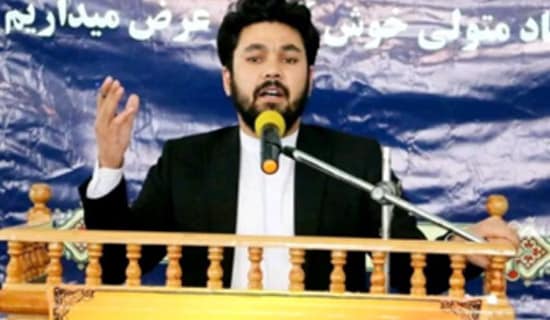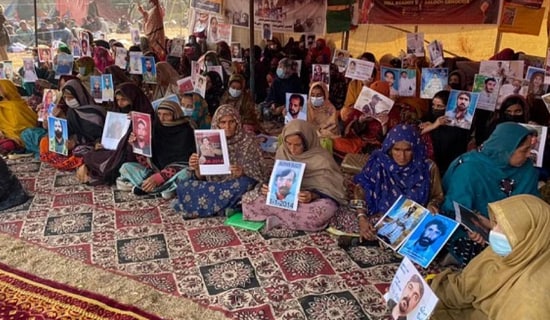Introduction
By all accounts the general elections held in Iraq on January 30, 2005 were a seminal event in the history of the country and, by extension, an important benchmark by which the future evolution of democracies in other countries of the Middle East will be measured. The people of Iraq went by the millions to cast their ballots in a first step toward establishing a democratic regime.
The mechanism of the elections was as follows:
Each Iraqi voter was given the opportunity to cast two ballots: one for the national assembly and one for one of the eighteen provincial councils. The voters in the three Kurdish provinces (Dahouk, Erbil and Sulaymaniya) cast a third ballot for the autonomous Kurdish parliament.
The choices open to the voters were broad and varied. There were 111 lists of political parties, coalitions or individuals, comprising a total of 7471 candidates who were competing for the 275 seats in the National Assembly. Additionally, 7850 candidates were running for 748 seats in the provincial councils (41 seats in each province, except for Baghdad with 51 seats.) And, finally, there were 499 candidates running for the 111 seats in the Kurdish Parliament. A total of 15,820 candidates at all levels of the elections were, thus, competing for 1134 seats, or an average of 14 candidates per seat - a high figure by Western standards but an understandable one for a people bursting with democratic impulses after almost half a century of political dictatorship and denial of liberty.
Election Results
According to the figures published by the Independent Elections Commission in Iraq (IECI), approximately 8.45 million voters, or about 59 percent of 14.2 million registered voters (including those registered overseas), cast their ballots. The results of the elections will be officially certified three days after the date of their publication, in order that anyone wishing to contest the results shall have an opportunity to come forward. As the director general of IECI 'Adil al-Lami has pointed out, it is not the tabulation of ballots that is apt to be in question. Rather, results may be contested for the alleged failure of the Elections Commission to open the ballot boxes for voters in the city of Mosul and a number of other cities in the Sunni Triangle because of security considerations. As a result, as many as 15,000 voters in one instance were denied the chance to vote. [1]
Based on the distribution of votes, twelve lists will be represented in the National Assembly:
Table 1: Lists Represented in the National Assembly
|
Procedures of Seat Allocation
Seat allocations for Iraq's 275-member National Assembly are calculated as follows:
- The total number of valid votes cast (8,456,266) is divided by 275 to give an initial quota of 30,750 votes per seat.
- Any list with fewer votes than the initial quota is excluded.
- After excluding the votes of lists who fell below the threshold the total votes used for calculating the allocation of seats is reduced to 8,011,450.
- A seat quota is then calculated by dividing the new total by 275, which is 29,132 votes per seat
- The unallocated balance of votes is dealt with by giving an extra seat to lists with the highest balance to complete the allocation of the 275 seats. [2]
As was expected, three lists (the Kurdish list (130), Shi'ite list (169), and Allawi's list (185)) have emerged with 87.6 percent of the votes. Had the Sunnis voted in large numbers, the number of votes of the three major lists may have been the same but their percentage of the total would have been decidedly lower.
Comments on the Results
The results suggest a number of observations:
SUPPORT OUR WORK

The Winners:
A) The Iraqi National Alliance
It is significant that the Iraqi National Alliance has emerged with a plurality rather than a majority of the votes. This outcome could limit its governing options, particularly on matters relating to the role of Islam in the state. It should also be kept in mind that this list itself is a coalition of two competing Shi'ite parties – the Supreme Council of the Islamic Revolution in Iraq (SCIRI) headed by Abd al-Aziz al-Hakim and the al-Da'wa Party, headed by Ibrahim al-Ja'afari – and the secular Iraqi National Congress, headed by Dr. Ahmad Chalabi. In addition to these three established political elements the Allied list includes a number of independent candidates, amongst whom are secular Shi'ites and even individuals representing other Iraqi ethnic groups.
Three major figures, 'Adil Abd al-Mehdi, Ibrahim al-Ja'afari and Ahmad Chalabi, have announced their candidacies for the post of prime minister. Provided the Alliance remains cohesive, which may not be the case for long, any candidate it sponsors is likely to be the next prime minister. This will leave Mr. Allawi out of the list of viable candidates. However, should group cohesion give way to the pressures and incentives of deal-making, there could be a big surprise that could benefit Mr. Allawi. Another possible contender is Hussein al-Shahrestani, a nuclear physicist who opposed being drawn into Saddam's program to produce weapons of mass destruction and who was subsequently imprisoned, may reemerge as a viable candidate after withdrawing from the race a few days ago
B) The Kurds
By all standards, the Kurds, who make up no more than 20 percent of the population, garnered 25.7 percent of the vote, have emerged as the biggest winners and greatest beneficiaries of Sunni boycott of the elections. The Kurds are now in a position to tip the scales in favor of a candidate amenable to fulfilling their political aspirations and demands. These include the election of their leader Jalal Talabani as the president of Iraq.
But beyond this immediate demand, the Kurds have three critical priorities: first, the creation of federalism in Iraq that will guarantee the autonomy of the Kurdish region comprising the three governorates of Dahouk, Erbil and Sulaymania; second, the incorporation of the City of Kirkuk with its vast oil reserves into the Kurdish region; and, third, the separation of powers and the giving of primacy in legislation to democracy over religion. In fact, the strength of the Kurds and some of the secular Shi'ites within the Alliance list backed by the secular Shi'ite group of Ayad Allawi will be a significant bulwark against any attempt by the Shi'ite clerics to produce an Islamist government in Iraq.
The Losers:
A) The Current Iraqi Leadership
The results of the elections have fallen below the expectations of Ayad Allawi, the interim prime minister, who was unable to escape blame for the absence of security and for the shortages in basic amenities, particularly electricity, drinking water, gasoline for cars, and gas for home cooking. Iraq's interim President, Sheikh Ghazi al-Yawer, whose list earned only five seats, is most likely to lose his job under the next government. Ironically, his failure is a success: that is, the results of the elections testify to their fairness and transparency. Elections in Arab states never result in existing governments losing.
B) Iraq's Elder Statesman
The results must also be considered unsatisfactory for Dr. 'Adnan al-Pachachi, Iraq's elder statesman, a leading Sunni candidate and a former minister of foreign affairs who failed to receive sufficient votes to be elected. Dr. al-Pachachi waxed philosophical by declaring that "Allah is generous" (Allah Karim) and that he will participate in the next elections. In the meantime, he will prod the Sunnis to be active in the new government and the drafting of the new constitution. [3] Dr. al-Pachachi is being mentioned as a possible second vice president of Iraq. [4]
C) The Monarchist Movement
The elections have dealt a fatal blow to the aspirations of two political movements which run on a platform calling for the restoration of monarchy to Iraq. The claimant to the throne, al-Sharif Ali bin Al-Hussein, a cousin of the last Iraqi monarch, Faisal II, received 13,740 votes. The second list under the name of Iraqi Hashemite Group, received another 9,781 votes. Even if the votes of both lists had been combined, the result would have gained hardly one seat in the National Assembly and ultimately had no impact on the nature of the emerging regime in Iraq.
Key Events After the Elections
Under the Transitional Administrative Law (the law governing Iraq, or TAL, during the transition to a constitutional democracy) the following key events must take place following the tabulation of the votes and the winners declared:
- The Transitional National Assembly will appoint by a two-third majority a Presidency Council, consisting of a President and two Deputy Presidents (Article 36 of TAL).
- The Presidency Council will appoint by a unanimous vote a Prime Minister and - on his or her recommendation - cabinet ministers to run the Iraqi government (Article 38). The number of ministries is not fixed by the TAL. If the Presidency Council fails to nominate a prime minister unanimously the responsibility will be reverted to the National Assembly, which must do so by a two-third majority.
- The Prime Minister and his cabinet must receive a vote of confidence by a simple majority of the National Assembly before commencing work as a government.
- The Transitional National Assembly is required to draft a new constitution by August 15, 2005.
- The draft constitution is to be presented in a referendum to the Iraqi people for approval by October 15, 2005.
By December 15, 2005 new elections will be held under the new constitution to choose a new national assembly which, in turn, will have to approve a new government.
The Weight of Women
Under the Transitional Administration Law, women will comprise at least 25 percent of the members of the National Assembly. It is a great achievement for the Iraqi women, although it is too early to tell what will be their weight in the assembly and how they vote on matters relating to family legislation.
The Problem of Personal Security
The Iraqi voters cast their ballots for lists of candidates, often not knowing who were on the lists. When the votes are finally tabulated and the seats are allocated, the names of the 1,134 individuals who will occupy the seats of the national assembly, the provincial councils, and the Kurdish parliament, will be made public. In some high-risk areas, but not only there, these men and women will be targets for terrorists and remnants of the Ba'th regime determined to undermine and disrupt the will of the electorate. Providing individual security to so many elected office holders will pose a great challenge to the nascent security services of Iraq.
* Dr. Nimrod Raphaeli is Senior Analyst of MEMRI's Middle East Economic Studies Program.
[1] Al-Zaman (Baghdad), February 14, 2005.
[2] The figures are provided by the Independent Elections Commission for Iraq on February 13, 2005. A detailed distribution of votes for all the 111 lists competed in the elections is published in the daily Al-Zaman (Baghdad), February 14, 2005.
[3] Al-Sharq Al-Awsat (London), February 14, 2005.
[4] Al-Quds Al-Arabi (London), February 14, 2005.




